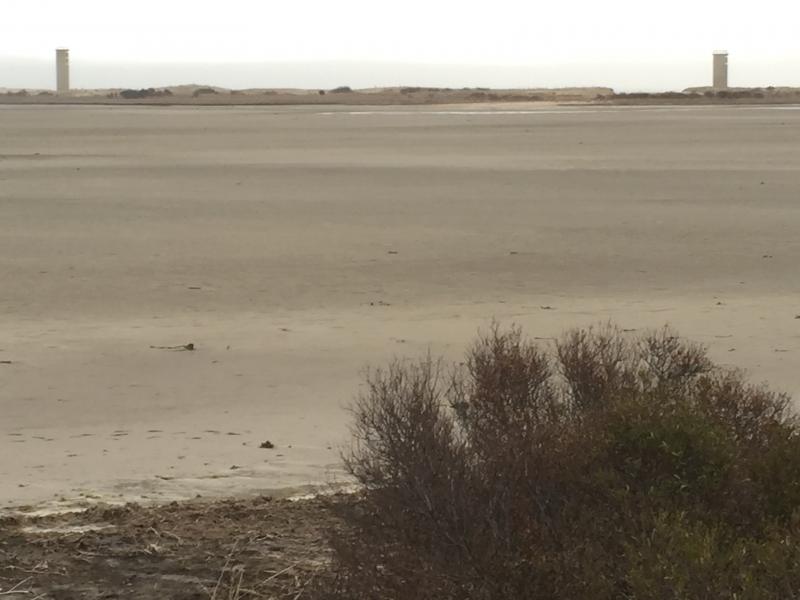I wonder what Hillary, Bernie and Donald think about Gordons Pond? Lots of talk about immigrants but not much about environment leading up to Tuesday’s primaries. But back in March even they might have been surprised to see the pond entirely dry. Desert dry, powdery dry. Not-enough-moisture-to-grab-a-footprint dry. Contrast that to last January when a major nor’easter flooded the pond and blew out sections of the popular Gordons Pond Trail.
“You must have been out there during that two weeks in March when we emptied it to maximum drawdown, to turn the water over,” said Paul Zarebicki. He is with Delaware’s Mosquito Control Section of the Fish and Wildlife Division. As noted in this column previously, Mosquito Control manages water levels in the pond in cooperation with the Division of Parks. Zarebicki opens gates and closes gates, puts boards in and takes them out, to control water levels. The idea is to help manage saltwater mosquito populations while maintaining habitat for migrating waterfowl and wading birds.
Twice a year the pond is drained completely, or as completely as the vagaries of weather will allow. That happens in the early spring and then again in early fall. After the pond is drained in the spring, it is brought back to half full for the summer months to make it less attractive for saltwater mosquitoes. After it’s drained in the fall, it is allowed to fill completely to benefit waterfowl and waders.
“This spring we had no rain at all during that two-week period when we had it drawn down,” said Zarebicki. “We put the boards back in to let it fill back up to half but sometimes it’s tough to get it back to half pool. With no appreciable rain since then and no abnormally high tides to fill it through the flap gates on the canal side, it’s taking its time.”
Zarebicki said Gordons Pond is a giant fish nursery. “The outside flap gates are kept wide open in the summer to let fish come in from the marsh and canal.”
Thousands of people pedal and hike around Gordons Pond throughout the year. At three to 10 miles per hour, it’s easy to observe close up. “We’ve talked with parks about putting up an interpretive sign so people would know how the control gates work and why the pond level varies. It hasn’t happened yet, but it would be helpful. When I’m out there putting boards in the dikes or managing the flap gates, I’m constantly questioned. Some people yell at us, wondering why we’re messing with the pond.”
A formal agreement with the Division of Parks spells out responsibilities for each agency, and specifies the management strategies including when the pond will be emptied and filled and when it will be kept at full pool and when at half pool. But it’s not an exact science, as this spring attests. “Keep in mind we do the best we can to adhere to this strategy, but Mother Nature often has different plans!” said Zarebicki.




















































